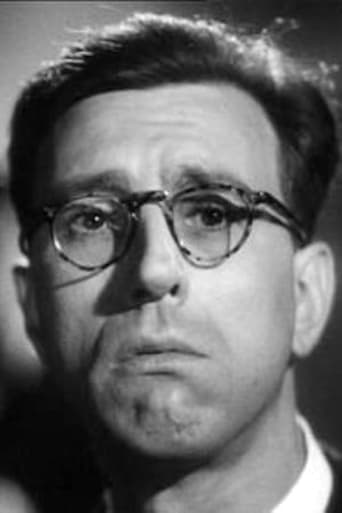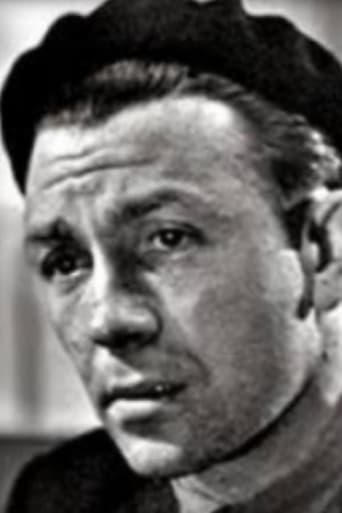Dorathen
Better Late Then Never
Tacticalin
An absolute waste of money
Breakinger
A Brilliant Conflict
Billy Ollie
Through painfully honest and emotional moments, the movie becomes irresistibly relatable
writers_reign
Unlike Hollywood and the UK who were turning out war-themed films throughout the six years of conflict and kept right on doing so after hostilities ceased French cinema got into the game in the last quarter. As an Occupied nation from 1940 to 1944 they were, of course, unable to produce and films reflecting the national climate and with the exception of La Bataille du Rail in 1946 and for perhaps obvious reasons, it took them more or less a quarter of a century to portray the Resistance on film with the best, Melville's L'Armee des Ombres, weighing in around 1970. That makes La Bataille du rail all the more interesting if not, indeed, valuable for being shot within weeks of the end of the war and using real railway employees, many of whom had been active in French Resistance, rather than professional actors. Debut director Rene Clement, who went on to become one of the most honoured filmmakers in terms of Prizes won, opts for a documentary feel rather than Hollywood-type heroics and his understated style is ideal for the tale he is telling. A decent print would be useful but it remains a keynote in French cinema.
FilmCriticLalitRao
For cinema enthusiasts, it is important to learn that the value of trains in the field of cinema has always been justly understood by filmmakers as truthful portrayals of trains have been extremely useful in making films which have become extremely popular with critics as well as with viewers. It would be appropriate to state that most of the films about war have an air of authenticity due to the realistic depiction of trains in them. It would not be an exaggeration to state that war films are popular due to the portrayal of trains in them. La Bataille Du Rail/The Battle of the Rails is the best example of a war film with trains and their impact on war as its major plot. The success of this film is due to the efforts of ordinary railway workers in war time France who were quick to realize that the damage to railway system in occupied France would be a key weapon in their fight against Nazi Germany. Those who favor technology in cinema would be shocked to learn how professionally the massive annihilation of trains was carried out in "The Battle of the Rails" despite the evident lack of technology. In 1946, this film by René Clément won a jury prize at Cannes Film Festival. In recent times, La Bataille Du Rail/The Battle of the Rails has been hailed as one of the classics of world cinema as it was shown in "Cannes Classics" section during 63rd Cannes International Film Festival held in 2010. Hardcore cinema enthusiasts would be thrilled to learn that it has been fully restored by INA in France where it can also be watched on DVD as well as Blu Ray formats.
jotix100
"The Battle of the Rails", Rene Clement's homage to the bravery of the railway workers of France is an interesting example of the work of the director, who had worked up to that time in documentaries. This 1946 film shown recently on a French international channel pays tribute to the men that defied the German invaders in the way they only knew how, by engaging in sabotage to the trains the German used to transport supplies and equipment from France to Germany.Mr. Clement early style could be described as being neo-realist in the way he chose the material for his documentaries. In fact, this was his second time as a full length feature director. Here, working with co-writer, Colette Audry, he reenacts those terrible years of the conflict. To their credit, the railway workers were united in their effort to erode the power of their enemy by whatever means to make a dent in the horrible situation they were put, having to work for the enemy.The film was photographed by Henri Alekan, a survivor of the camps, who was able to survive his horrific experience at the hands of the Germans. The music score by Baudrier blends well with the material. Charles Boyer, the actor acts as the narrator. The film is a tribute to the valor of the courageous men who dared to resist the ruthless invaders.
johnek-bloomfield
Based on real life events that occurred between the Normandy Landings and the liberation, La Bataille du Rail was commissioned by the Associations of the Resistance soon after the end of the Second World War. That a war film would be put into production so soon after the end of the war and that it would prove so successful with a public that lived through it suggests a desire to show the extent of the resistance's achievements and the pride of the French.However, Clément carefully avoids making the film too didactic or sentimental. We can see how the ruthlessness of the occupying forces in rooting out the saboteurs and their anti-Semitism is not overplayed as their portrayal seems appropriate to a modern audience not directly scarred by the events shown. Another way in which he achieves this is through the way the camera stays relatively detached from the action, showing the events almost like a documentary rather than forcing us to identify with any of the characters. It has been said that the cast was made up of unprofessional actors and in some cases real railwaymen. This adds to the realism and creates an effect where no one film star stands out as an obvious "hero", enforcing a message of "ordinary men doing what they had to".



